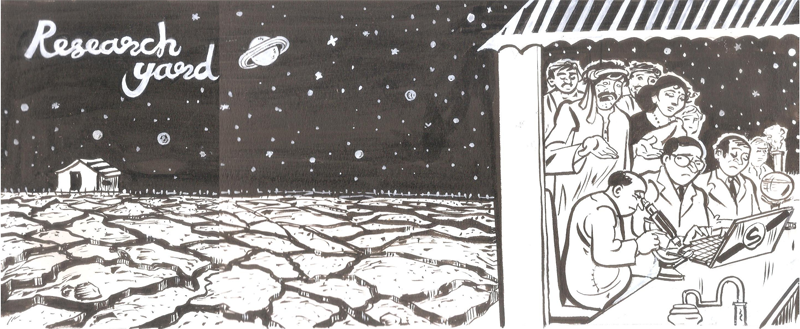The first interesting thing about this constellation is its name which is dervied from Βοώτης, Boōtēs that means ox-driver, or herdsman. This name is attributed to the patron of farmers or the god Enlil (the leader of Babylonian pantheon). Its shape, however, was also likened to a kite or ice cream cone. Boötes was also listed among the 48 constellation listed by Ptolemy and still makes the list among the 88 modern constellations. Arcturus, an orange giant, and the fourth brightest star in the night sky. Epsilon Bootis is a colorful multiple star which is popular among amatuer astronomers. Eta Boötis is a spectroscopic binary, nine times brighter than our Sun. Beta Boötis is a yellow giant, and Gamma Boötis is a white giant.
Delta Boötis is a wide double star, the primary star is a yellow giant and the secondary componet is a yellow main sequence star. Mu Boötis (Alkalurops) is a famous triple star (same as the other triple star Epsilon Boötis) located 121 light-years away from Earth. Epsilon Boötis is also called Izar (loincloth in Arabic) or Pulcherrima (most beautiful in Latin). Among other multiple stars located in this constellation, Xi Boötis is a quadruple star, Pi Boötis is a triple star, and Zeta Boötis is a triple star. Zeta Boötis contains a physical binary plus an optical companion to this binary system. 44 Boötis (i Boötis) is a yellow star to naked eye, and is a double variable star very close to Earth (42 light-years away). The orbital period of this double star is 220 years. ZZ Boötis is an eclipsing binary star system. T Boötis is a particular case, as it is a nova, and a nova is classified as a transient astronomical event. A nova is the sudden brightness of a star that fades away and there are a number of reasons behind this event. T Boötis was observed in the April of 1860, and was never observed again.
Boötes is not only home to many multiple stellar systems, but also stars hosting multiple planets or single planets. Wasp-14 is a F5V-type star hosting a curious exoplanet. WASP-14 b is one of the densest exoplnets discovered so far (7.341 MJ and 1.281 RJ) via transient method. Tau Boötis is a star in Boötes constellation which is orbited by a giant planet (with a period of 3.31 days and 5.95 Jupiter masses, thus this planet is a hot Jupiter) and has a companion GJ527B. HD 128311 hosts two planets, and HD 132406 is a G0V star (like our Sun) hosting a gas giant discovered in 2007. WASP-23 also hosts one planet, and HD 131496 is a K0 star orbited by one planet. HD 132563 is a triple sytem with one component being a planet (this planet was discovered in 2011 by radial velocity method). Triple systems like HD 132563 which consist of one planet and two stars are rather rare (or not many of them has been confirmed yet) and are a hot topic in astronomy these days.
29 stars in total are visible to naked eye in night sky in Boötes constellation. Boötes is surrounded by Coma, Virgo, Canes Venatici, Hercules, and Ursa Major.
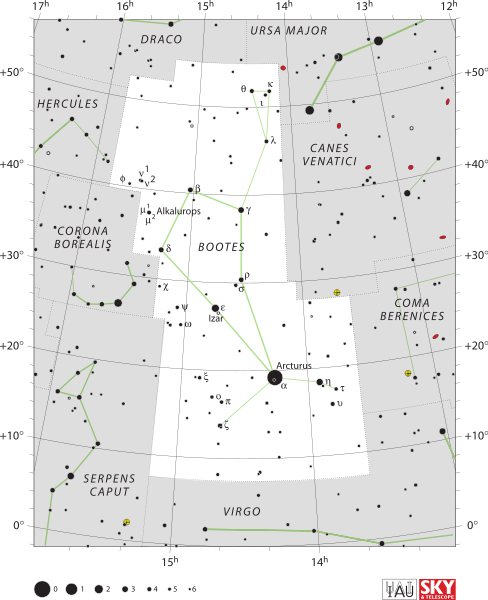
The deep sky objects of Boötes are plenty, among which are globular cluster NGC 5466. As of galaxies, NGC 5248 (Caldwell 45) is a spiral galaxy lying 50 million light-years away from Earth and is a member of Virgo galaxy cluster. NGC 5676 is another spiral galaxy located in Boötes.
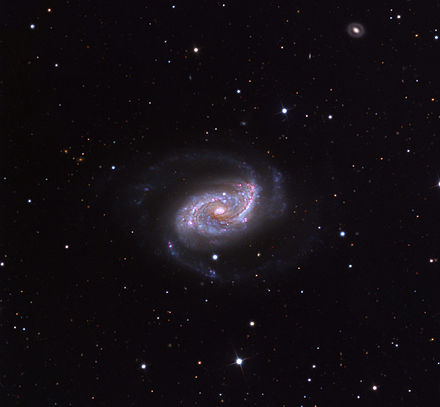
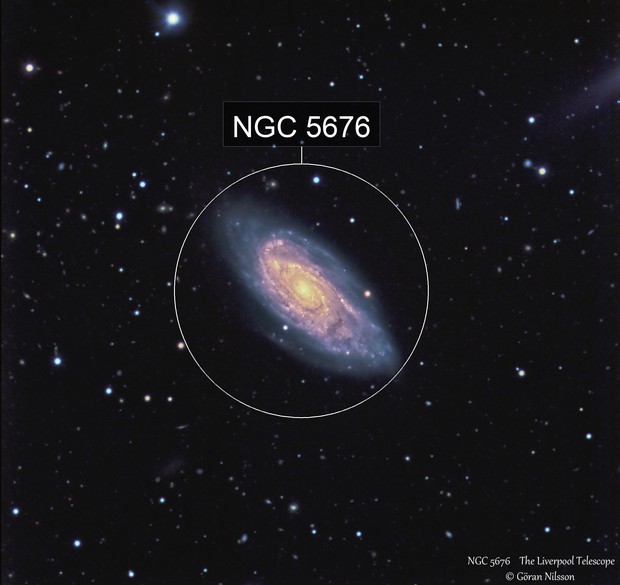
NGC 5548 is a particular galaxy in this constellation, as it is a Seyfert galaxy. A Seyfert galaxy is a type of galaxy which has an active nucleus at the center (quasar-like center) with a high surface brightness. There is a supermassive black hole (or another dark, very massive object) at the center of this galaxy which amke its center appear so bright.
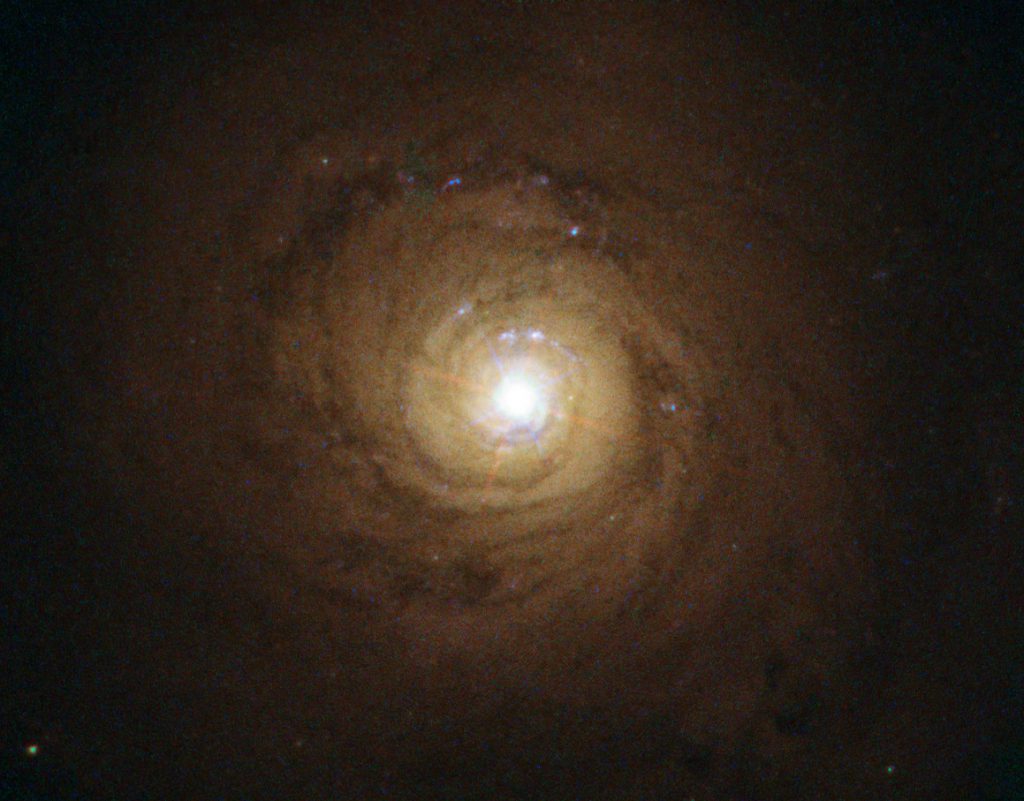
Boötes void is another particular feature of this constellation. 250-million-light-year in diameter, this huge space is devoid of any galaxies and it is 700 million light-years from Earth.
